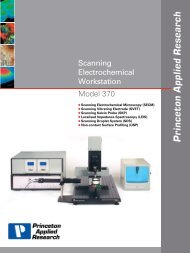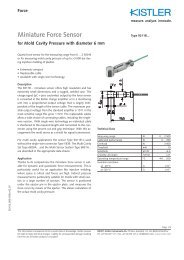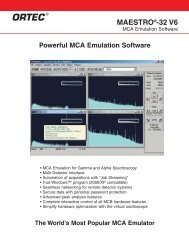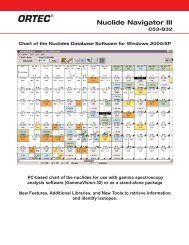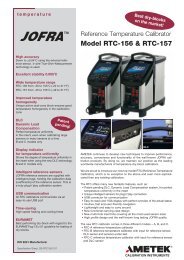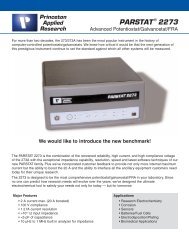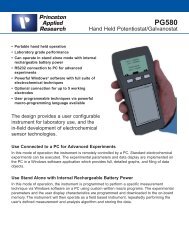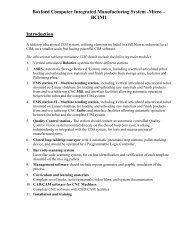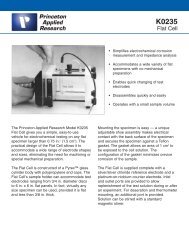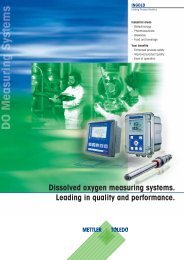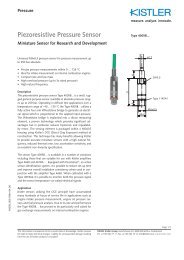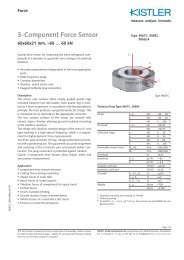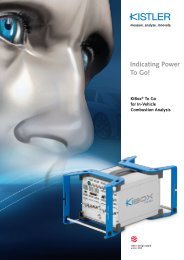Laboratory catalogue
Laboratory catalogue
Laboratory catalogue
You also want an ePaper? Increase the reach of your titles
YUMPU automatically turns print PDFs into web optimized ePapers that Google loves.
7. The butyrometers are now removed from the centrifuge,<br />
taking care not to tilt them, and are placed<br />
for 5 minutes with their stoppers downwards, in a<br />
water bath heated to 65 °C. (Fig. 5)<br />
meniscus<br />
eye<br />
It is important to maintain an exact temperature so as<br />
to obtain accurate results. Only a read-off at 65 °C will<br />
ensure an exact result. If the temperature is too low, the<br />
volume of the column of fat is reduced and a fat content<br />
reading that is too low will be indicated.<br />
8. After the butyrometer has been removed from the<br />
water bath, it should be held in a vertical position at<br />
a height where the meniscus of the column of fat is<br />
at eye level. With the help of the stopper, marks the<br />
demarcation line between the residual mixture and<br />
fat on a whole sub-division of the butyrometer scale<br />
and read off the height of the fat column at the lowest<br />
point of the meniscus. If the reading takes too<br />
much time, the butyrometer must be placed in the<br />
water bath again.<br />
(Fig, 6 and 7)<br />
Fig. 7<br />
Result and degree of accuracy<br />
The result should be read off to half a scale point, i.e. to<br />
0.05%. It is not possible to obtain a more accurate result<br />
with whole milk butyrometers. If the meniscus touches<br />
the graduation mark, then the result is accepted as such<br />
(Fig. 7a). If the meniscus intersects the graduation mark,<br />
then the lower value is taken (Fig. 7b).<br />
4.0 %<br />
3.9 %<br />
3.8 %<br />
4.0 %<br />
3.9 %<br />
3.8 %<br />
Fig. 7a a 4.0% reading<br />
Fig. 7b a 3.95% reading<br />
The difference between the readings from both butyrometers<br />
must not be greater than 0.10%, i.e. the reproducibility<br />
amounts to 0.10%.<br />
When recording the result you must add the note “Fat<br />
content according to Gerber”. If the two specimens differ<br />
by 0.1%, then the mean value of both readings is<br />
taken.<br />
Specimen 1: 4.20 %<br />
Specimen 2: 4.30 %<br />
Correct result: 4.25 % fat content<br />
However, if the two readings are 4.20% and 4.25% fat,<br />
then the lower value 4.20% is taken – on the principle<br />
that it is better to err on the side of caution.<br />
Fig. 6<br />
Measured values can be reliably and accurately read off with the aid of a<br />
safety reading lamp<br />
A wrong reading caused by parallaxis may be the result<br />
if your eye and the meniscus are not at the same level.<br />
Determination of the fat content of<br />
homogenized milk according to Gerber<br />
Treated milk is homogenized in order to prevent<br />
creaming. This involves reducing the globules of fat,<br />
which vary in size, to a fairly uniform diameter of 1–2<br />
micrometers. However, in the centrifuging process, the<br />
separating effect is considerably lessened. Accordingly,<br />
the specimen have to be kept longer in the centrifuge<br />
in order to completely separate off the released<br />
fat.<br />
14



